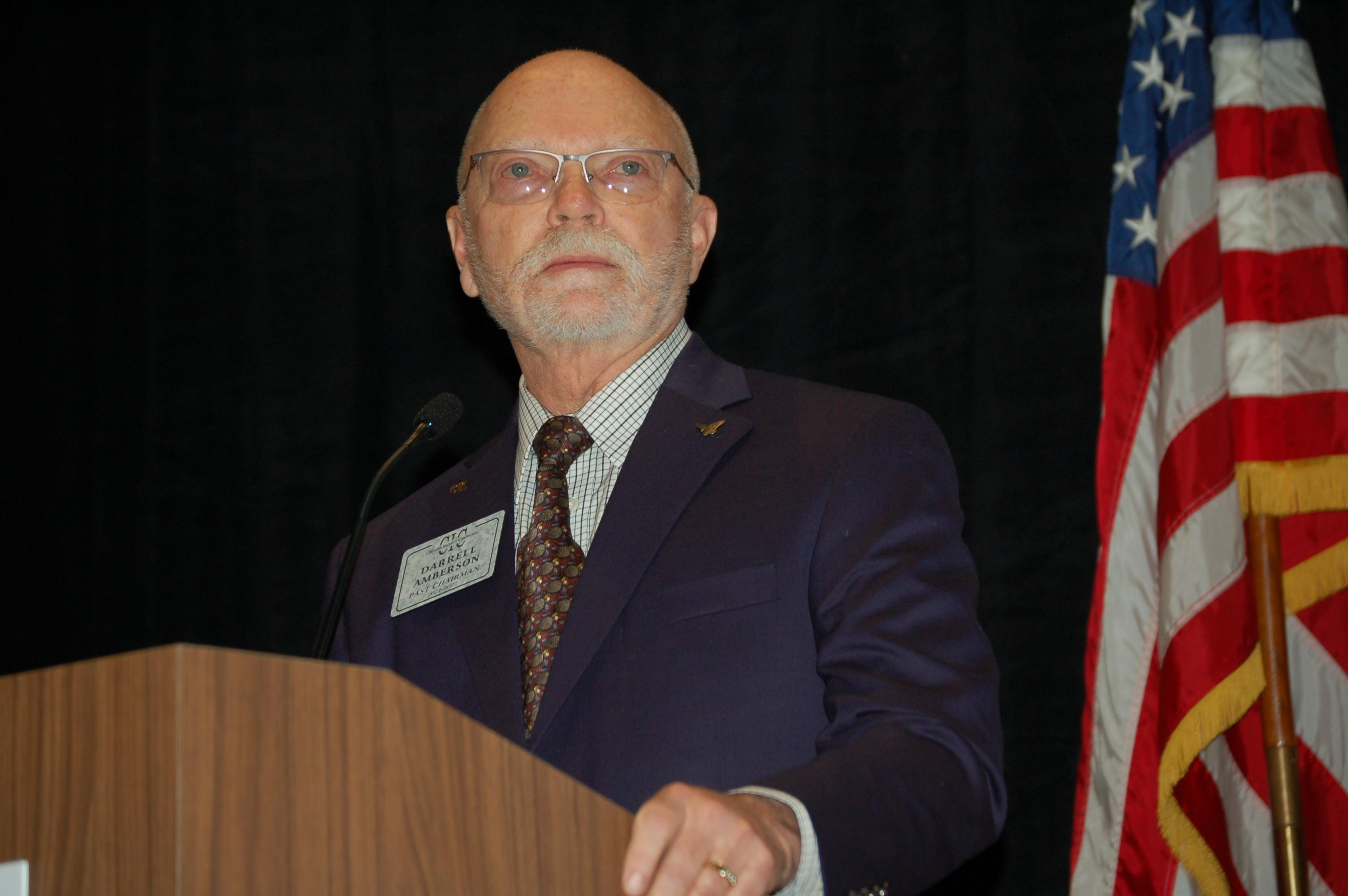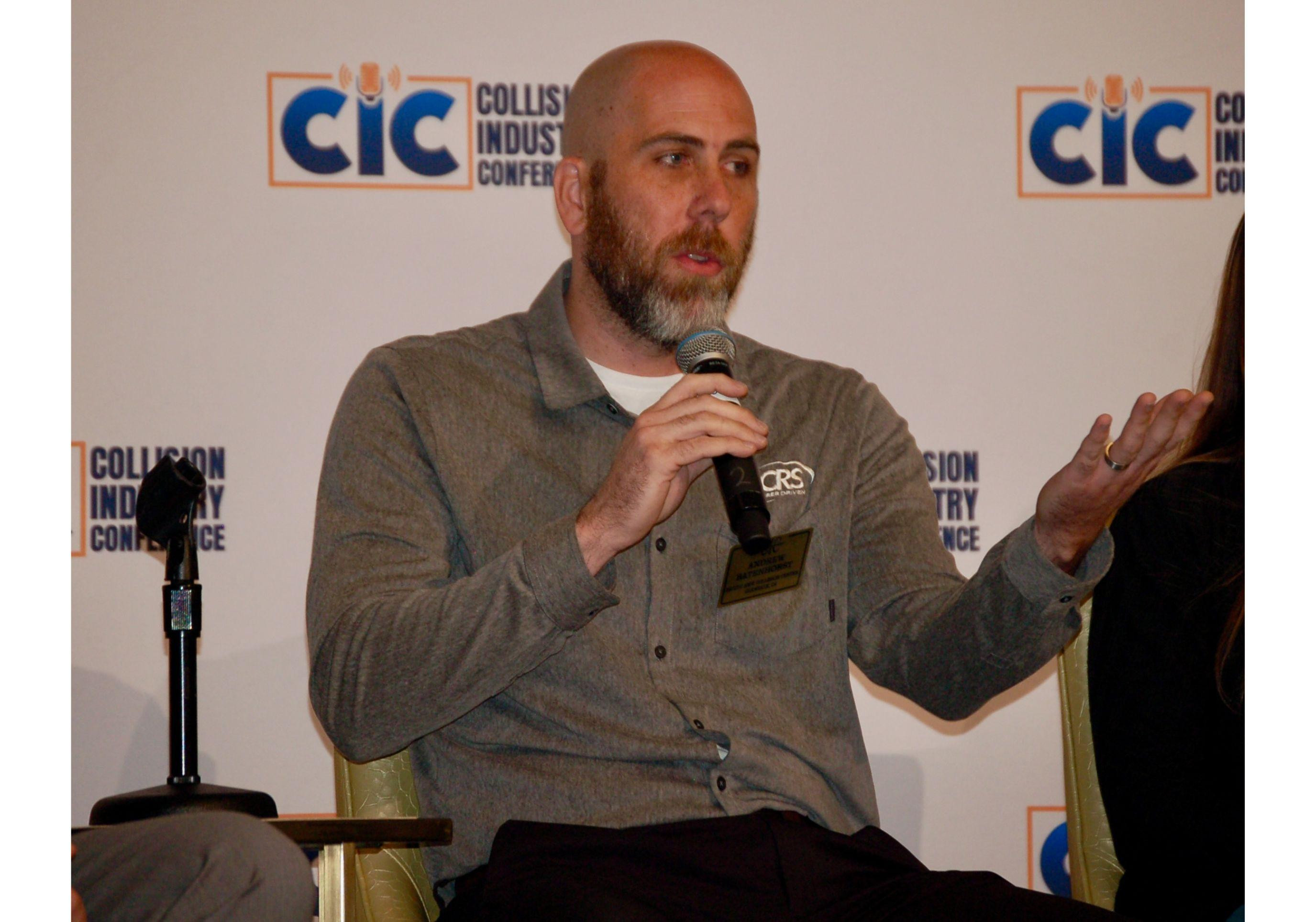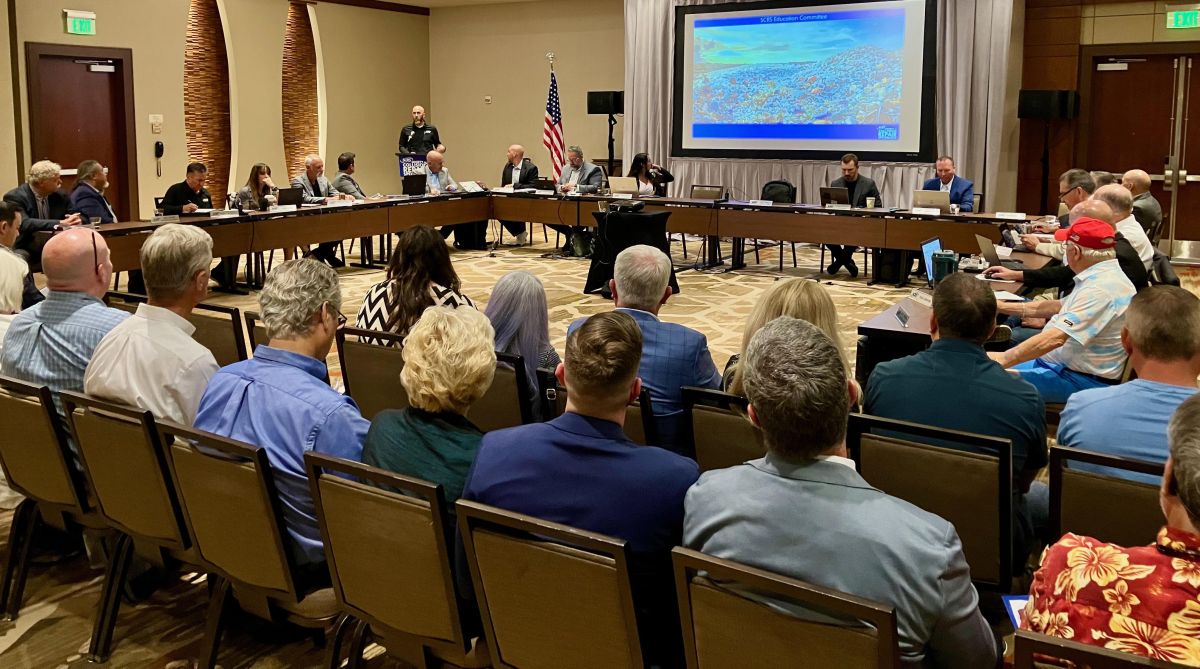Collision repairers say there’s still a long way to go before current systems that can help automate some aspects of estimating are able to produce something closer to the repair plan shops need, but some see the systems still offering some potential time-savings for shops.
Darrell Amberson of the LaMettry’s Collision chain of shops in Minnesota said he’s seen improvement in the systems that help repair planners locate the necessary OEM repair procedures for a given job. But he’d like to see so-called “AI-enabled” estimating systems get closer to creating detailed repair plans rather than just the automated preliminary estimates they do today.
“There’s a whole bunch of operations that you have to know about to look for that are not included or that may require some judgment,” Amberson said during a Future Disruptions Committee discussion at the Collision Industry Conference (CIC) this summer. “At what point could we get more and more of those automated?”

The current photo-estimating systems, he said, primarily automate only the “write what you see” portion of what’s needed, which is likely more helpful for insurers than shops.
“I use the analogy of an egg in the bag,” Amberson said. “If you put an egg in a bag and I smash it, and I’m going to write an estimate on it, I can see it needs a bag, but really, I know it needs an egg, too. Couldn’t we get to that point that the initial estimates could recognize that as well?”
Creating Initial Estimates Quickly
While not disagreeing that current automated estimating systems aren’t perfect, some collision repairers see them as potentially useful within their shops.
Andrew Batenhorst, manager of Pacific BMW Collision Center in Glendale, CA, recently offered a demonstration at an industry meeting of how his shop uses Mobile Jumpstart in the CCC ONE app to quickly create initial estimates.
“They have a lot of data in their system that they can use to identify some of the low-hanging fruit to let us make a very quick determination of what a repair cost might be,” Batenhorst said. “It requires taking only a handful of photos, and a few keystrokes on your phone.”
 Andrew Batenhorst of Pacific BMW Collision Center said automating initial estimates can free up time needed to research OEM repair information.
Andrew Batenhorst of Pacific BMW Collision Center said automating initial estimates can free up time needed to research OEM repair information.
Creating an initial estimate quickly frees up time that can be spent researching the OEM procedures for that job.
“There's a lot of time wasted trying to get the basics on the [initial estimate], which could be better spent trying to dig deeper into those repair instructions,” Batenhorst said.
He said the automated initial estimate also can be run through the Society of Collision Repair Specialists’ (SCRS) Blueprint Optimization Tool (BOT), which can quickly audit estimates looking for missed operations or line items.
Michael Bradshaw of K&M Collision in Hickory, NC, agrees the Mobile Jumpstart app creates only an initial estimate, not the full repair plan needed once a job comes into the shop. But he’s using it to quickly identify potential total losses or when a customer comes in for an initial drivable estimate.
“We really don’t like to do those because we feel like it's an enormous waste of time,” Bradshaw said. “And it’s not accurate because the OE research and the scans that have to take place, and all the additional damage that’s going to be uncovered once the vehicle is disassembled. So we're kind of training our [customer service representatives] to explain to customers, ‘We’re going to do an AI-generated estimate that is extremely preliminary for you to get your claim process started,’ and then explain the process as far as a repair appointment, a disassembly, and a repair plan that'll actually determine a proper cost of repair.”
The app also is an easy way early in the process to triage vehicles based on the level of damage, he said.
Batenhorst said his shop has also used Mobile Jumpstart when checking in a customer vehicle to quickly quote for repair of unrelated damage. As a dealership-owned shop, he also has a junior estimator at the dealership’s service drive using the app to provide initial collision repair quotes to those customers as well.
“I think it’s really easy for us as an industry to shy away from technology because we don’t understand it or because we shy away from change,” Bradshaw said. “But this is something that anyone can use, and it's going to save 15 or 20 minutes at the onset of each file, and a lot more time in situations when it identifies a total before you get more involved with that.”
He said it’s important to get the correct settings within your CCC profile to ensure Mobile Jumpstart works well. “But if you're a CCC user, you already have this capability and functionality,” he said. “This is not an additional add-on module or anything.”
Automated Estimating Just a Start
Bradshaw and Batenhorst, who both are on the SCRS Board of Directors, demonstrated the Mobile Jumpstart product during a recent association meeting. SCRS Executive Director Aaron Schulenburg said the presentation wasn’t meant to promote any particular product since there are other similar tools.
“But I think there’s a lot of resistance to things like AI, and as some of our board members started to utilize these resources in their business, [we wanted to] help people think about ways it can be an advantage,” Schulenburg said. “Being a repair planner is a difficult job. Can we make their life a little bit easier to let them focus on the things that are becoming more critical in their role rather than some of the more routine functions that could be replaced through some automation?”
Amberson sees such estimating tools as only one of the opportunities for increased automation in the industry. He said about 15 years ago, he sent a painter at the company he was with then to get an update on a virtual painting product the University of Minnesota was working on.
“He came back and said, ‘One day I may be wearing a tie like you are while doing my job,’” Amberson said. “And I thought, he’s right, that could happen. We’re at a point now I’m almost thinking: why hasn’t it happened? Why can’t we use robots in there, while maybe he’s sitting at some control, and [the process] is environmentally safer, cleaner, potentially more efficient? What is it going to take before we can get there, that we can automate refinishing?”
He said he’s seen some products that automate some basic welding.
“How far away are we from automating those sorts of things in the shop? I don’t think we’re anywhere near where we could be,” Amberson said.
He said automakers currently send auditors into certified shops to verify work is being done according to factory repair procedures.
“But there’s technology out there right now that can put sensors into welders and other devices that can verify and report information without a human presence,” he said. “I’d like to think one day we’re going to get there.”
He believes shops aren’t doing as much measuring of vehicles as they should be, and that, too, offers an opportunity for more automation to make the process easier and faster.
“There are just so many things that could be happening and we’re not quite there yet,” he said.














John Yoswick